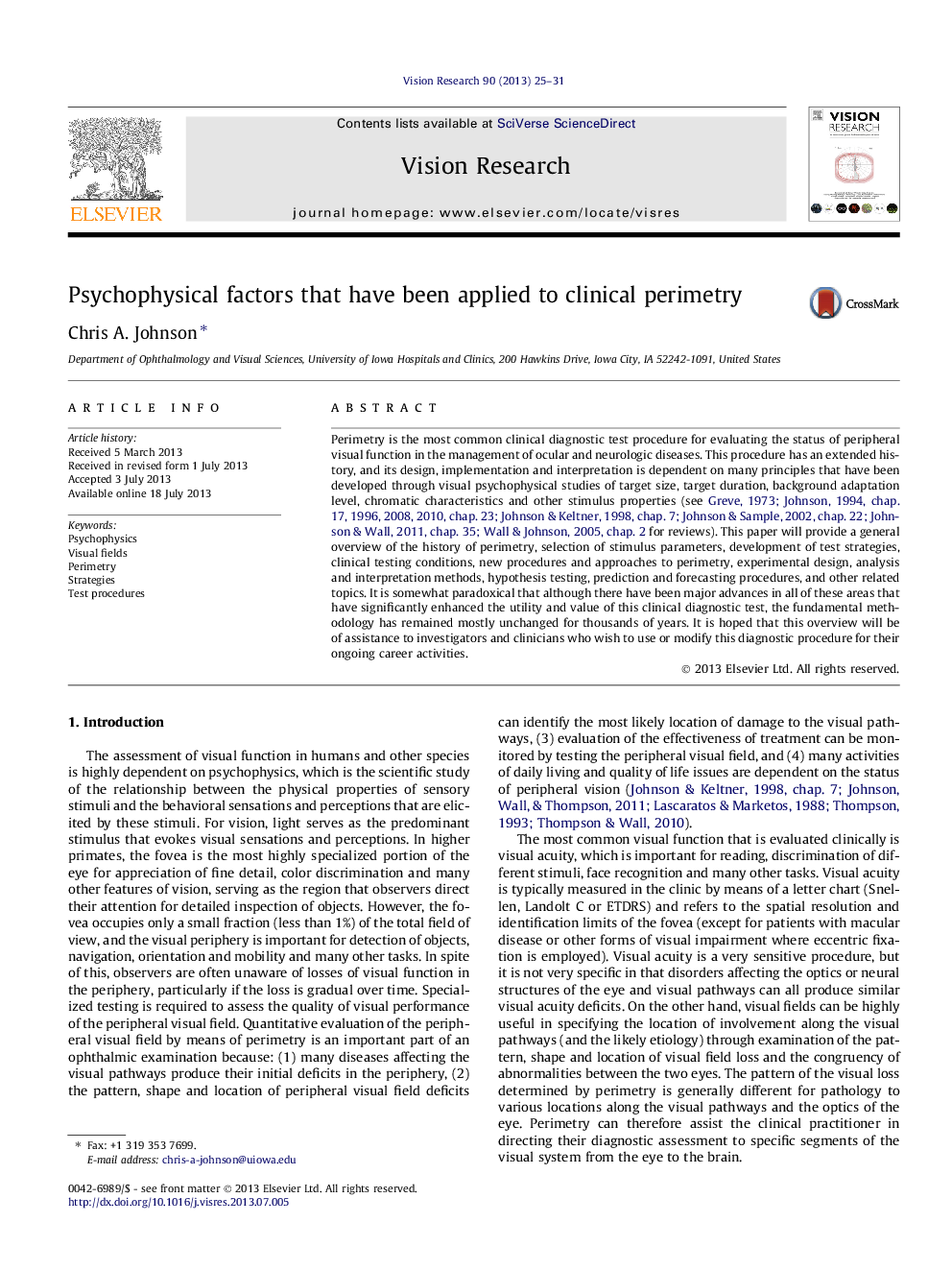| Article ID | Journal | Published Year | Pages | File Type |
|---|---|---|---|---|
| 6203577 | Vision Research | 2013 | 7 Pages |
â¢I describe psychophysical principles that have been applied to perimetry.â¢The accuracy and efficiency of perimetry has been improved through psychophysical principles.â¢Many individuals have contributed to perimetry for the past several thousand years.â¢Qualitative assessment has been replaced by evidence-based quantitative procedures.
Perimetry is the most common clinical diagnostic test procedure for evaluating the status of peripheral visual function in the management of ocular and neurologic diseases. This procedure has an extended history, and its design, implementation and interpretation is dependent on many principles that have been developed through visual psychophysical studies of target size, target duration, background adaptation level, chromatic characteristics and other stimulus properties (see Greve, 1973; Johnson, 1994, chap. 17, 1996, 2008, 2010, chap. 23; Johnson & Keltner, 1998, chap. 7; Johnson & Sample, 2002, chap. 22; Johnson & Wall, 2011, chap. 35; Wall & Johnson, 2005, chap. 2 for reviews). This paper will provide a general overview of the history of perimetry, selection of stimulus parameters, development of test strategies, clinical testing conditions, new procedures and approaches to perimetry, experimental design, analysis and interpretation methods, hypothesis testing, prediction and forecasting procedures, and other related topics. It is somewhat paradoxical that although there have been major advances in all of these areas that have significantly enhanced the utility and value of this clinical diagnostic test, the fundamental methodology has remained mostly unchanged for thousands of years. It is hoped that this overview will be of assistance to investigators and clinicians who wish to use or modify this diagnostic procedure for their ongoing career activities.
